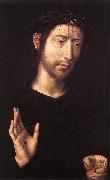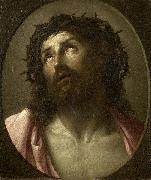Wholesale Oil Painting No Minimum |
|||||||||||
|
|
|||||||||||

|
|||||||||||
|
|
|
||||||||
Bouts, AelbrechtFlemish, approx. 1452-1549 |
||||||||
|
|
||||||||
Man of Sorrows
Man of Sorrows Painting ID:: 9802 |
undated, oil on wood, Mus??e des Beaux-Arts, Lyons undated, oil on wood, Mus??e des Beaux-Arts, Lyons |
|||||||
|
|
||||||||
CORNELISZ VAN OOSTSANEN, JacobDutch Northern Renaissance Painter, ca.1472-1533 North Netherlandish painter, designer and woodcutter. He was the brother of Cornelis Buys I ( fl 1490-1524), who is usually identified as the MASTER OF ALKMAAR (see MASTERS, ANONYMOUS, AND MONOGRAMMISTS, |
||||||||
|
|
||||||||
|
|
Man of Sorrows
Man of Sorrows Painting ID:: 90409 |
first half of 16th century
Medium oil on panel
Dimensions Height: 23.7 cm (9.3 in). Width: 15.9 cm (6.3 in).
cyf first half of 16th century Medium oil on panel Dimensions Height: 23.7 cm (9.3 in). Width: 15.9 cm (6.3 in). cyf |
||||||
|
|
||||||||
Hans MemlingNetherlandish Northern Renaissance Painter, ca.1435-1494 Born in Seligenstadt, near Frankfurt in the Middle Rhein region, it is believed that Memling served his apprenticeship at Mainz or Cologne, and later worked in the Netherlands under Rogier van der Weyden (c. 1455?C1460). He then went to Bruges around 1465. There is an apocryphical story that he was a wounded at the Battle of Nancy, sheltered and cured by the Hospitallers at Bruges, and that to show his gratitude he refused payment for a picture he had painted for them. Memling did indeed paint for the Hospitallers, but he painted several pictures for them, in 1479 and 1480, and it is likely that he was known to his patrons of St John, prior to the Battle of Nancy. Memling is connected with military operations only in a distant sense. His name appears on a list of subscribers to the loan which was raised by Maximilian I of Austria, to defend against hostilities towards France in 1480. In 1477, when he was incorrectly claimed to have been killed, he was under contract to create an altarpiece for the gild-chapel of the booksellers of Bruges. This altarpiece, under the name of the Seven Griefs of Mary, is now in the Gallery of Turin. It is one of the fine creations of his more mature period. It is not inferior in any way to those of 1479 in the hospital of St. John, which for their part are hardly less interesting as illustrative of the master's power than The Last Judgment which can be found since the 1470s in the St. Mary's Church, Gda??sk. Critical opinion has been unanimous in assigning this altarpiece to Memling. This affirms that Memling was a resident and a skilled artist at Bruges in 1473; for the Last Judgment was undoubtedly painted and sold to a merchant at Bruges, who shipped it there on board of a vessel bound to the Mediterranean, which was captured by Danzig privateer Paul Beneke in that very year. This purchase of his pictures by an agent of the Medici demonstrates that he had a considerable reputation. |
||||||||
|
|
||||||||
|
|
Man of Sorrows
Man of Sorrows Painting ID:: 92021 |
1480s
Medium oil on oak panel
Dimensions Height: 53.4 cm (21 in). Width: 39.1 cm (15.4 in).
cyf 1480s Medium oil on oak panel Dimensions Height: 53.4 cm (21 in). Width: 39.1 cm (15.4 in). cyf |
||||||
|
|
||||||||
Guido Reni1575-1642 Italian Guido Reni Galleries Born in Bologna into a family of musicians, Guido Reni was the son of Daniele Reni and Ginevra de?? Pozzi. As a child of nine, he was apprenticed under the Bolognese studio of Denis Calvaert. Soon after, he was joined in that studio by Albani and Domenichino. He may also have trained with a painter by the name of Ferrantini. When Reni was about twenty years old, the three Calvaert pupils migrated to the rising rival studio, named Accademia degli Incamminati (Academy of the "newly embarked", or progressives), led by Lodovico Carracci. They went on to form the nucleus of a prolific and successful school of Bolognese painters who followed Annibale Carracci to Rome. Like many other Bolognese painters, Reni's painting was thematic and eclectic in style. By late 1601, Reni and Albani had moved to Rome to work with the teams led by Annibale Carracci in fresco decoration of the Farnese Palace. During 1601-1604, his main patron was cardinal Sfondrato. By 1604-1605, he received an independent commission for an altarpiece of the Crucifixion of St. Peter. After a few year sojourn in Bologna, he returned to Rome to become one of the premier painters during the papacy of Paul V (Borghese). From 1607-1614, he was one of the painters patronized by Borghese. Abduction of Deianira, 1620-1621.Reni's frescoed ceiling of the large central hall of garden palace, Casino dell'Aurora located in the grounds of the Palazzo Pallavicini-Rospigliosi, is considered his masterpiece. The casino was originally a pavilion commissioned by Cardinal Scipione Borghese; the rear portion overlooks the Piazza Montecavallo and Palazzo del Quirinale. The massive fresco is framed in quadri riportati and depicts Apollo in his Chariot preceded by Dawn (Aurora) bringing light to the world. The work is restrained in classicism, copying poses from Roman Sarcophagi, and showing far more simplicity and restraint than Carracci's riotous Triumph of Bacchus and Ariadne[5] in the Farnese. Reni in this painting is allies himself more with the sterner Cavaliere d'Arpino,Lanfranco, and Albani "School" of mytho-historic painting, and less with the more crowded frescoes characteristic of Pietro da Cortona. There is little concession to perspective, and the vibrantly colored style is antithetical to the tenebrism of Caravaggio's followers. Payments showed that he was paid in 247 scudi and 54 baiocchi upon completion on 24 September 1616. He also frescoed in Paoline Chapel of Santa Maria Maggiore in Rome as well as the Aldobrandini wings of the Vatican. According to rumor, the pontifical chapel of Montecavallo (Chapel of the Annuciation) was assigned to Reni to paint. However, because he felt underpaid by the ministers, the artist left for Bologna, leaving the role of the preeminent artist in Rome to Domenichino. |
||||||||
|
|
||||||||
|
|
Man of Sorrows
Man of Sorrows Painting ID:: 92602 |
1630 - 1700
Medium oil on panel
Dimensions 51.5 X 44.5 cm (20.3 X 17.5 in)
cjr 1630 - 1700 Medium oil on panel Dimensions 51.5 X 44.5 cm (20.3 X 17.5 in) cjr |
||||||
|
|
||||||||
|
Guido Reni 1575-1642 Italian Guido Reni Galleries Born in Bologna into a family of musicians, Guido Reni was the son of Daniele Reni and Ginevra de?? Pozzi. As a child of nine, he was apprenticed under the Bolognese studio of Denis Calvaert. Soon after, he was joined in that studio by Albani and Domenichino. He may also have trained with a painter by the name of Ferrantini. When Reni was about twenty years old, the three Calvaert pupils migrated to the rising rival studio, named Accademia degli Incamminati (Academy of the "newly embarked", or progressives), led by Lodovico Carracci. They went on to form the nucleus of a prolific and successful school of Bolognese painters who followed Annibale Carracci to Rome. Like many other Bolognese painters, Reni's painting was thematic and eclectic in style. By late 1601, Reni and Albani had moved to Rome to work with the teams led by Annibale Carracci in fresco decoration of the Farnese Palace. During 1601-1604, his main patron was cardinal Sfondrato. By 1604-1605, he received an independent commission for an altarpiece of the Crucifixion of St. Peter. After a few year sojourn in Bologna, he returned to Rome to become one of the premier painters during the papacy of Paul V (Borghese). From 1607-1614, he was one of the painters patronized by Borghese. Abduction of Deianira, 1620-1621.Reni's frescoed ceiling of the large central hall of garden palace, Casino dell'Aurora located in the grounds of the Palazzo Pallavicini-Rospigliosi, is considered his masterpiece. The casino was originally a pavilion commissioned by Cardinal Scipione Borghese; the rear portion overlooks the Piazza Montecavallo and Palazzo del Quirinale. The massive fresco is framed in quadri riportati and depicts Apollo in his Chariot preceded by Dawn (Aurora) bringing light to the world. The work is restrained in classicism, copying poses from Roman Sarcophagi, and showing far more simplicity and restraint than Carracci's riotous Triumph of Bacchus and Ariadne[5] in the Farnese. Reni in this painting is allies himself more with the sterner Cavaliere d'Arpino,Lanfranco, and Albani "School" of mytho-historic painting, and less with the more crowded frescoes characteristic of Pietro da Cortona. There is little concession to perspective, and the vibrantly colored style is antithetical to the tenebrism of Caravaggio's followers. Payments showed that he was paid in 247 scudi and 54 baiocchi upon completion on 24 September 1616. He also frescoed in Paoline Chapel of Santa Maria Maggiore in Rome as well as the Aldobrandini wings of the Vatican. According to rumor, the pontifical chapel of Montecavallo (Chapel of the Annuciation) was assigned to Reni to paint. However, because he felt underpaid by the ministers, the artist left for Bologna, leaving the role of the preeminent artist in Rome to Domenichino. Man of Sorrows 1630 - 1700 Medium oil on panel Dimensions 51.5 X 44.5 cm (20.3 X 17.5 in) cjr |
||||||||
|
|
||||||||
|
Prev Next
|
||||||||
|
|
||||||||
|
Related Paintings to Guido Reni :. |
||||||||
|
|
||||||||
|
CONTACT US |




